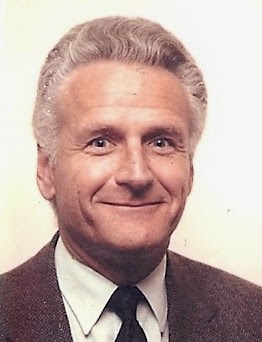 |
| Jean-Pierre Schaeken Willemaers Chairman of the Energy, Climate & Environment Department Thomas More Institute Speaker at PolyTalk 2014 |
What would a single European market for energy look like and how realistic is it ?
A European single market for energy
is not on the Commission’s agenda. Even if it were the case, it would be very
difficult to get the approval of the member states.
Indeed, even a single regulator at
the EU 28 level, a prerequisite for a single market, has been rejected by the
member states due to the subsidiarity principle. However, a single regulator
(without necessarily implementing a single market) would be very useful in
order to secure electrical supply,
avoiding network congestion and so on.
Repeated serious black-outs would potentially
convince the member states to change their minds.
To improve the convergence of
regional markets and the exchange of electrical energy, the Commission and the
member states are focusing on strengthening the electrical interconnections
between member states as well as increasing the number of electrical “entry”
points.
However, the development of
interconnections takes time: up to 10 years to obtain environment and
installation permits and to get them built.
The European Commission proposed a 40% target for GHG reductions by 2030
and a 27% target for the market share of renewable energy. Do you think this is
feasible?
First of all, it should be recalled
that environmental objectives are just one of the main concerns of the European
Commission: security of supply and competitiveness being currently considered
as first priority.
The real question now is not the
feasibility of a 40% target for GHG reductions by 2030 below 1990 level and a
27% share for renewable energy, but the economic and social impact of such a
scheme, and, among others, the impact on the competitiveness of the EU
industry, particularly the energy intensive one, and on the purchasing power of
households.
One of the major contributions to
the electricity price growth in the EU, is the cost of de-carbonization and in some member states, the phase-out of
nuclear power. It does not only deal with cost of subsidies and of balancing the electrical system, but also
with the investments in infrastructure, as a result of the increasing share of
intermittent power.
After having spent large amounts of
public money, placed utilities in serious difficulty and done little to reduce
CO2 emissions, member states that gained a significant share of
their electricity market from wind and solar production and/or started to phase
out nuclear power, did not even succeed in building a robust renewable industry. On the contrary,
a number of solar panels and wind turbine manufacturers went bankrupt or are facing difficult times.
Europe’s energy dependence is one of the biggest challenges Europe is
facing. According to you, what would be needed to secure Europe’s energy independence?
Improving the energy independence (since
securing full independence would not be realistic) requires to structure the
power and fuel mix correctly or, in other words, to integrate all segments of
an efficient energy policy, including competitiveness.
In such a perspective, the share of
intermittent power (wind and solar) should be capped so that it becomes just a
component of the electricity mix as other sources of energy. As far as carbon
emissions reduction is concerned, the reason for promoting wind and solar
power, it is irrational to exclude nuclear as a contributor to low carbon
policy. Its life cycle CO2 emissions per kWh is of the same order
of magnitude as those from on shore
wind power and lower than those from
photovoltaic panels.
Moreover, the life span of nuclear
power stations, meeting safety criteria, should be extended and construction of
new power stations should be allowed, based on best safety practices and cost
criteria.
Third and especially fourth
generation reactors when available, are qualified in this perspective. Nuclear fuel is not in short supply today
(and will not be in the future, on the contrary) and are well distributed worldwide
(mostly in politically stable countries).
As fossil fuels will still be part
of the energy mix in the coming decades, domestic production should be
promoted. In this respect, it is irrational to ban hydraulic fracking for the
exploration of shale gas and for gas extraction if economic and safety
conditions are met. The current technology is safe if used by responsible
professionals. However, more pedagogy is needed to overcome emotional fear of
people.
As a rule, better and more energy
interconnections and reverse flows as well as energy storage is a of the
essence.
Of course, R&D should be
fostered to improve current technologies and for alternative energy sources.
Leonid Bershidsky published an editorial piece in Bloomberg explaining
that Europe’s high energy costs are not particularly important in terms of
competitiveness as manufacturing companies have improved their energy
efficiency in industrial processes, compensating the higher prices they pay. Do
you agree with this statement?
Not at all.
If energy costs were not particularly important
in terms of competitiveness, how does one explain the manufacturing renaissance
in the United States and huge spending on new facilities such as chemical,
steel and aluminum plants after the shale oil and gas boom?
Why would facilities which have relocated
outside the US come back to the US, if it weren’t to benefit from cheap energy?
The shale bonanza has, indeed,
created hundreds of thousands of new high-paid , middle class, jobs and has
given the US a long-term economic advantage over its competitors and helped the
country recover from the recession.
If energy
costs were not particularly important in terms of competitiveness, why would
Germany exempt a number of industrial companies from the contribution to the
energy transition promoting intermittent renewable energy and phase-out of
nuclear power that lead to strong increases of the electricity bills, if it
weren’t to compensate for high energy prices and sustain their competitiveness?

No comments:
Post a Comment